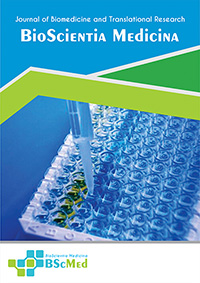Main Article Content
Abstract
Background: Streptococcus mutans is a major contributor to the formation of dental plaque and the initiation of caries. Orthodontic appliances, particularly removable ones, can create favorable conditions for S. mutans colonization, increasing the risk of caries and other oral health issues. Chlorhexidine is a commonly used antimicrobial agent in dentistry, but it can have side effects like tooth staining and altered taste. Guava leaf extract has shown promising antibacterial properties due to its rich content of flavonoids, tannins, and other bioactive compounds. This study aimed to compare the effectiveness of guava leaf extract and chlorhexidine in reducing S. mutans colonization on acrylic-based removable orthodontic appliances.
Methods: This in vitro study used 25 acrylic plates, which were divided into five groups: guava leaf extract at concentrations of 75%, 80%, and 90%, chlorhexidine gluconate 0.2% (positive control), and aquades (negative control). The acrylic plates were first contaminated with S. mutans and then immersed in the respective solutions for 10 minutes. The number of S. mutans colonies was then counted using a colony counter.
Results: The mean number of S. mutans colonies was significantly lower in the chlorhexidine group (27.8 ± 6.6 CFU/ml) and the guava leaf extract groups (9.4 ± 3.3 CFU/ml for 90%, 42 ± 7.8 CFU/ml for 80%, and 381 ± 81.1 CFU/ml for 75%) compared to the aquades group (1461.2 ± 274.5 CFU/ml). There was no significant difference between the chlorhexidine group and the 90% and 80% guava leaf extract groups.
Conclusion: Guava leaf extract, particularly at concentrations of 90% and 80%, is as effective as chlorhexidine in reducing S. mutans colonization on orthodontic appliances. Guava leaf extract may be a promising natural alternative to chlorhexidine for maintaining oral hygiene in orthodontic patients, especially those with concerns about chlorhexidine's side effects.
Keywords
Article Details
As our aim is to disseminate original research article, hence the publishing right is a necessary one. The publishing right is needed in order to reach the agreement between the author and publisher. As the journal is fully open access, the authors will sign an exclusive license agreement.
The authors have the right to:
- Share their article in the same ways permitted to third parties under the relevant user license.
- Retain copyright, patent, trademark and other intellectual property rights including research data.
- Proper attribution and credit for the published work.
For the open access article, the publisher is granted to the following right.
- The non-exclusive right to publish the article and grant right to others.
- For the published article, the publisher applied for the Creative Commons Attribution-NonCommercial-ShareAlike 4.0 International License.





